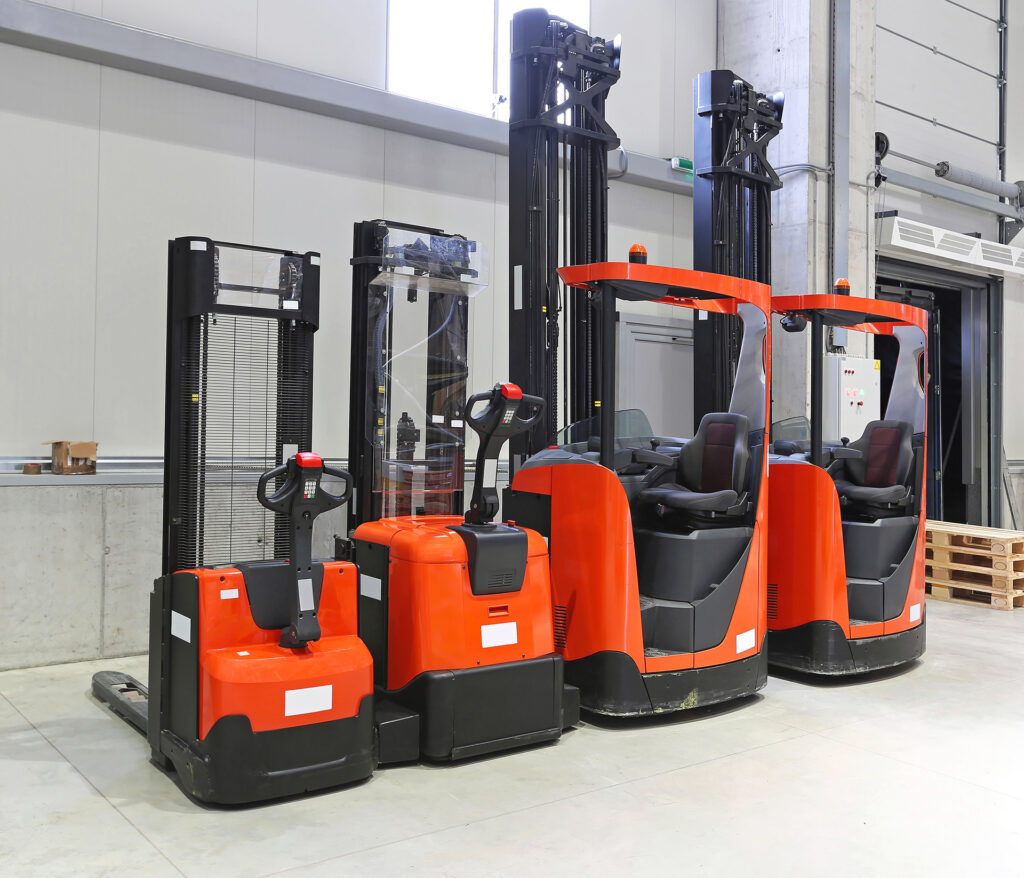With a large number of forklift types and a wide selection of brands available, finding the right powered industrial truck for your company’s needs can be difficult. Below we have the seven main forklift classes recognized by (OSHA).
Class I – Electric Motor Rider Forklifts
Class I forklifts are battery electric powered forklifts, units can be either stand-on or sit down models. These forklifts are ideally suited to the loading and unloading of tractor trailer, handling pallets and a wider variety of other applications across multiple industries from food and retail storage to factories and general warehousing. Units can be fitted with either cushion or pneumatic tires, with cushion tires models suited to indoor operations travelling across smooth floors whilst pneumatic tire models can be used in dry outdoor applications.
Class I forklifts are commonly used for applications where air quality needs to be considered, being battery powered they are a lot quieter when operating and create zero emissions making them ideally suited to indoor operations.
To help maintain a units lifting capacity the industrial battery powering the unit is incorporated as part of its counterbalance.
Class II – Electric Motor Narrow Aisle Forklifts
Class two forklifts are specially designed and engineered for applications where space utilization and maximized used are key criteria. They are engineered for maximum maneuverability which allows them to operate in tighter spaces and narrow aisles.
Class II forklifts such as articulated narrow aisle forklifts and very narrow aisle turret trucks are ideally suited for applications that are looking to maximize the use of available vertical storage space and pallets or goods must be safely and efficiently lifted high up.

Class III – Electric motor hand pallet jacks, stacker and tow tractors
Class three hand pallet jacks, stackers and tow tractors are often referred to as warehouse materials handling equipment. Battery powered these units come in both walk behind and ride-on variations.
They are predominantly designed and engineered to operate indoors in applications such as warehouses, making them ideal for unloading smaller deliveries or moving goods to staging areas where they can be handled and loaded by larger forklifts.
Class IV – Internal combustion engine cushion tire forklifts
Class IV forklifts are internal combustion engine forklift’s powered by either diesel fuel, petrol, LPG or CNG. They are fitted with solid cushion tires that provide a smooth operator ride when driven across indoor surfaces. As the cushion tires aren’t filled with air they are puncture proof making these types of unit’s ideally suited to operations where there is potential for sharp debris to be on the operating floor that could potentially puncture and damage an air filled pneumatic tire.
Class IV forklifts are ideally suited for operation in warehousing, distribution and retails settings.
Class V – Internal combustion engine pneumatic tire forklifts
Class V forklifts are very similar in specification to class IV forklifts, with the significant difference being they’re fitter with air filled pneumatic tires and designed primarily for outdoor use.
Strong and durable class V forklifts are ideally suited for applications including construction sites, lumberyards and other outdoor applications.
Class VI – Electric or internal combustion engine tow tractors
Class VI includes both battery electric and combustion engine tow tractors. This class of unit is predominantly used for towing loads rather than lifting. Units in this class are commonly used on assembly lines or in airports.
Class VII – Rough terrain forklift
Class VII forklifts are specially designed and manufactured for outdoor operations. They are fitted with tough durable tractor tires similar to those fitted to tractors to operate across rough and uneven ground. Units are almost exclusively powered by diesel engines provided enough power for the units to lift and transport heavy loads across rough and uneven terrain.
Class VII units are often utilized in lumberyards, constructions sites and the agriculture and farming sectors.


